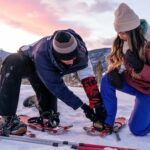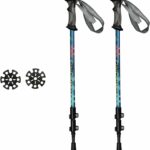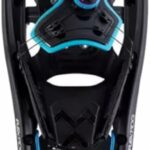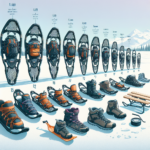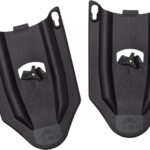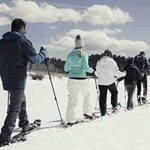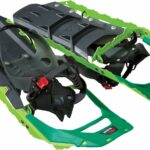If you’re looking to explore a winter wonderland with comfort and agility, snowshoes are essential gear for your adventure. This article will guide you through the key factors that you should consider when purchasing snowshoes such as size, type, bindings, and the additional features that might just make your snowy trek that much more enjoyable. From selecting the apt style to suit your terrain and activity level, to understanding the relationship between your weight and the size of your snowshoes, navigating your way through a snowshoe purchase can be an adventure in itself. Let’s get started on your informed buying journey, helping you to stride confidently into your next winter escapade.
Understanding the Different Types of Snowshoes
When it comes to snowshoes, one size definitely does not fit all. In fact, there are several different types of snowshoes you’ll want to consider, each designed for specific terrains and conditions. This means that the type of snowshoe you need can greatly depend on where you plan on using them.
Flat terrain snowshoes
Flat terrain snowshoes are your standard, all-purpose shoes. They’re designed for casual walking and hiking on mainly flat surfaces or gentle slopes. If you’re new to snowshoeing or just want a pair for occasional winter walks in the park, this is probably your go-to option.
Rolling terrain snowshoes
If you’re more adventurous and like to wander off the beaten path, consider getting rolling terrain snowshoes. These are designed with more aggressive traction systems for better grip when you’re crossing varied landscapes with hills and moderate to steep slopes.
Mountain terrain snowshoes
If you’re an extreme adventurer who plans on tackling high mountain peaks and icy slopes, then mountain snowshoes are for you. They come with superior traction for climbing steep and icy terrains and typically have a sturdy and robust build for the tough conditions of the backcountry.
Racing snowshoes
For those who have a need for speed, the racing snowshoes are designed with lightweight materials and minimalist frame designs for optimal speed and endurance. They are generally narrower and smaller than other snowshoes, allowing for more fluid and faster movement across the snow.
Factors to Consider When Choosing Snowshoes
Choosing the right snowshoe isn’t just a matter of grabbing the first pair you see. You need to consider several factors to ensure that you get the most suitable pair for your needs.
Type of activity
Different snowshoe activities require different types of snowshoes. As mentioned above, there are options for casual strolls, adventurous hikes, and high-speed races. Understand your primary activity to guide your selection.
Your weight
Your weight, plus any gear or backpack you plan on carrying, can greatly affect how well your snowshoes perform. Too much weight and you’ll sink into the snow; too little, and you’ll be wasting energy lifting unnecessarily big shoes. Most snowshoes have a recommended weight range, so keep that in mind.
Snow conditions
Are you going to be trekking through fresh, fluffy snow, or hard-packed, icy conditions? The type of snow can affect which snowshoes are best. For example, larger snowshoes are more suited for fresh, deep snow as they provide better floatation.
Your footwear
What kind of boots you’ll be wearing can also affect your choice of snowshoes. Some bindings may not work with oversized winter boots or specialized mountaineering boots. Make sure to check that your snowshoe bindings and boots are compatible.
Understand Snowshoe Sizes
When it comes to snowshoes, size matters. Selecting the right size can make all the difference in the world for your hiking comfort and efficiency.
Why Size Matters
Size determines how much a snowshoe floats on the snow. Larger snowshoes are better for deep, light snow because they spread your weight more evenly, preventing you from sinking. Smaller snowshoes are preferable for more packed snow, easier trails, and less weight.
How to Choose the Right Size
Your weight (including any gear you will carry) largely determines the optimal snowshoe size. That being said, you should also consider the type of snow and terrain. As mentioned earlier, larger size is preferable in fresh, powdery snow and smaller ones work well in packed snow conditions.
Understanding Snow Load
Snow load refers to the amount of snow that falls in an area and is a key factor in how much your snowshoe sinks, or ‘floats’ above the snow. Higher snow loads require snowshoes with more surface area to provide better floatation.
Size and Traction Considerations
Size and shape also affect snowshoe traction. Smaller, more compact snowshoes provide better grip and stability on packed snow or icy terrain. The shape and positioning of crampons also play a role in traction, helping you navigate keeping your grip on slippery surfaces.
Important Snowshoe Features
When choosing snowshoes, it’s important to understand a few key features, including bindings, crampons, heel lifts, and closure systems. These features can add to your comfort, stability, and overall performance.
Bindings
Bindings connect your boots to your snowshoes. Look for a model that provides a secure, comfortable fit, and can be adjusted to accommodate different boot sizes. Two popular types of bindings are fixed and rotating, each with their own set of pros and cons.
Crampons
Crampons are sharp, steel teeth located on the bottom of the snowshoes that provide traction on icy or hard-packed snow. More aggressive crampon designs are usually found on mountain terrain snowshoes.
Heel lifts
Heel lifts are especially beneficial when climbing steep hills as they relieve strain on your calves. This feature is often found in mountain or rolling terrain snowshoes.
Boa closure system
Though not on every model, some snowshoes use a Boa closure system for the bindings. This mechanism allows for quick and easy adjustments to the fit and can often be operated while wearing gloves.
Material and Construction of Snowshoes
Snowshoes can be crafted from a variety of materials, each with their own benefits and drawbacks.
Aluminum Frame Snowshoes
Most modern snowshoes are made from lightweight, durable aluminum frames. These models often feature synthetic decks for better grip in various snow conditions.
Wooden Snowshoes
While not as common today, wooden snowshoes are loved for their traditional, natural aesthetic. However, they require more maintenance and are often heavier than their aluminum counterparts.
Composite Material Snowshoes
Composite snowshoes are typically high-performance shoes made of lightweight, flexible and durable materials. They are often used for off trail exploration and mountainous terrain due to their aggressive traction and robust construction.
Choosing the Correct Snowshoe Bindings
Bindings are crucial as they secure your boots to the snowshoes. There are three main types: rotating, fixed, and hybrid bindings.
Rotating Bindings
Also known as pivot bindings, these allow the snowshoe to rotate or pivot under your foot as you walk, which can help with ascents and traversing slopes.
Fixed Bindings
Fixed bindings keep the snowshoe closely attached to your foot, giving you more control. These are particularly useful for running or when needing precise foot placements on tricky terrain.
Hybrid Bindings
As the name suggests, hybrid bindings combine aspects of both fixed and rotating bindings, offering a balance of both control and ease of movement.
Winter Weather Conditions and Snow Types
Understanding the type of snow conditions you’ll be facing will impact your choice of snowshoes. The performance of a snowshoe can vary significantly depending on whether you’re tackling fresh, powdery snow, hardened, icy conditions, or anything in between.
How Snow Type Affects Snowshoe Performance
Light, fluffy snow requires larger shoes for adequate flotation, while packed or icy snow calls for smaller shoes for better grip and control. Plastic decking often performs better in icy conditions, while aluminium frames with synthetic decking are generally better for deep, powdery snow.
Adjusting to Changing Weather Conditions
The great outdoors is unpredictable, and so is the weather. This can lead to drastic changes in snow conditions. It’s good to get a pair of all-terrain snowshoes or ones with adjustable features that can adapt to varying conditions.
Tips for Proper Snowshoe Maintenance
Like any outdoor equipment, snowshoes need proper care and maintenance to keep them performing at their best over the years.
Cleaning Your Snowshoes
After each outing, shake off any loose snow and wipe down your snowshoes, paying particular attention to the metal parts that can corrode. Allow them to air dry before storage.
Storing Your Snowshoes
Store your snowshoes in a dry, cool place out of direct sunlight. Avoid stacking heavy objects on top of your snowshoes, so they maintain their shape.
Periodic Snowshoe Inspection
Regularly inspect your snowshoes for signs of damage or wear, such as tears in the decking, bent frames or dull crampons. Addressing these issues promptly can extend the lifespan of your snowshoes.
Safety Considerations When Snowshoeing
Safety is a priority when snowshoeing. Keep these suggestions in mind to ensure a safe snowshoeing experience.
Choosing the Right Terrain
Choose terrain based on your ability and the capabilities of your snowshoes. If you’re a beginner, stick to flat ground and work your way up as you gain confidence.
Appropriate Clothing and Gear
Dress in layers to adjust to changing weather. Ensure you have the proper gear such as spare clothing, snacks, water, sunscreen, and a map. Always carry a headlight and cell phone in case of emergency.
Knowing When to Turn Back
Know your limits and don’t let pride get in the way of safety. Listen to your body and if conditions change unexpectedly, turn back. There’s always another day to hike!
Best Practices for Efficient Snowshoeing
Snowshoeing is not overly complicated, but there are a few tips and techniques to get the most out of your outing.
Walking Technique
Stride naturally, as if walking, but with a slightly wider stance to avoid stepping on the frames. Use poles to help maintain balance and increase your forward motion.
Weight Distribution
Try to distribute your weight evenly across the whole snowshoe to optimize flotation. Avoid leaning heavily on one part as this can cause you to lose balance.
Maintaining Stability
When traversing a slope, keep your weight over your uphill snowshoe to avoid slipping.
Conserving Energy
Maintain a steady, comfortable pace and try not to lift your feet too high off the ground – let the snowshoes do the work! Keep in mind, snowshoeing can be physically demanding so conserve energy where possible.
In summary, Snowshoeing is a fantastic way to stay active during the winter months. When selecting your snowshoes, take the time to consider not only the type and size, but also factors such as the material, binding type, and specific features to ensure a safe and enjoyable snowshoeing experience.
- What Snowboard Bindings Should I Get? - January 23, 2024
- What Size Screws For Snowboard Bindings? - January 23, 2024
- How To Snowmobile On Water? - January 23, 2024


